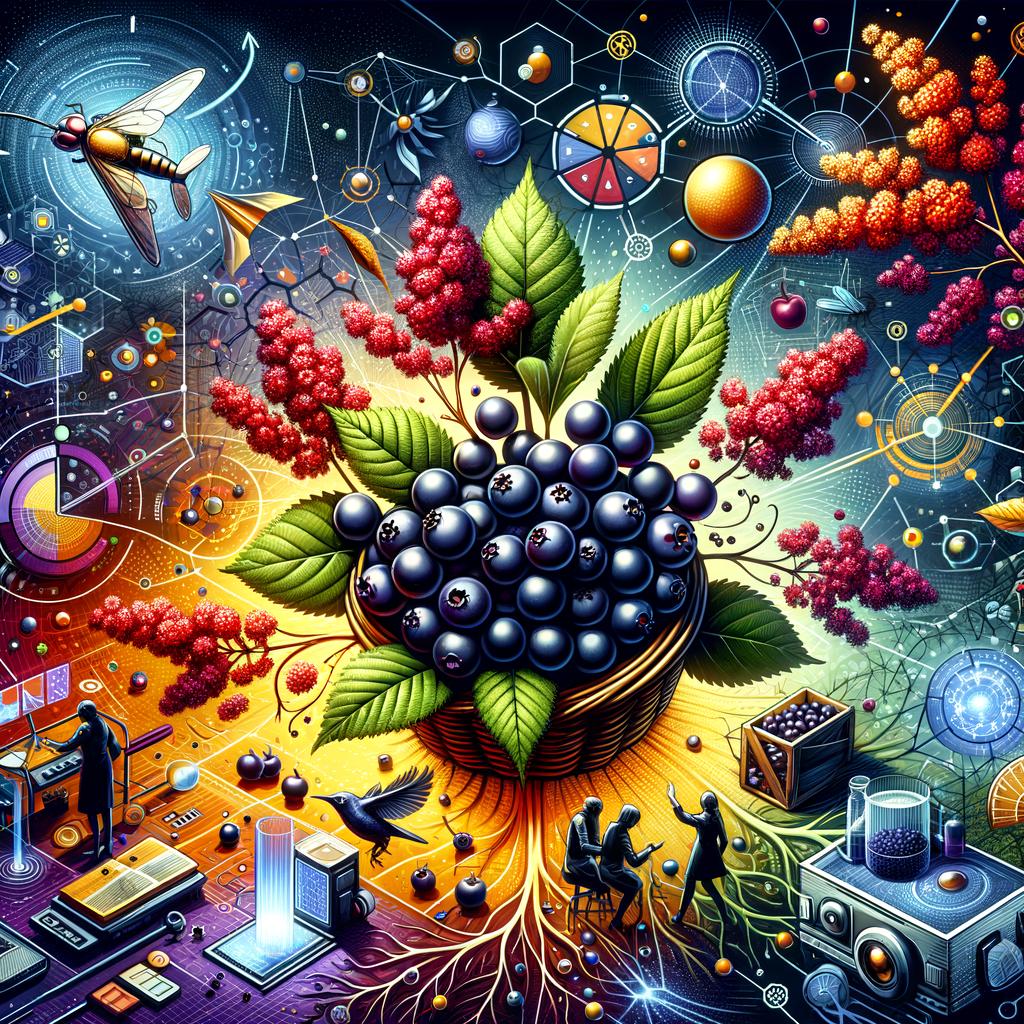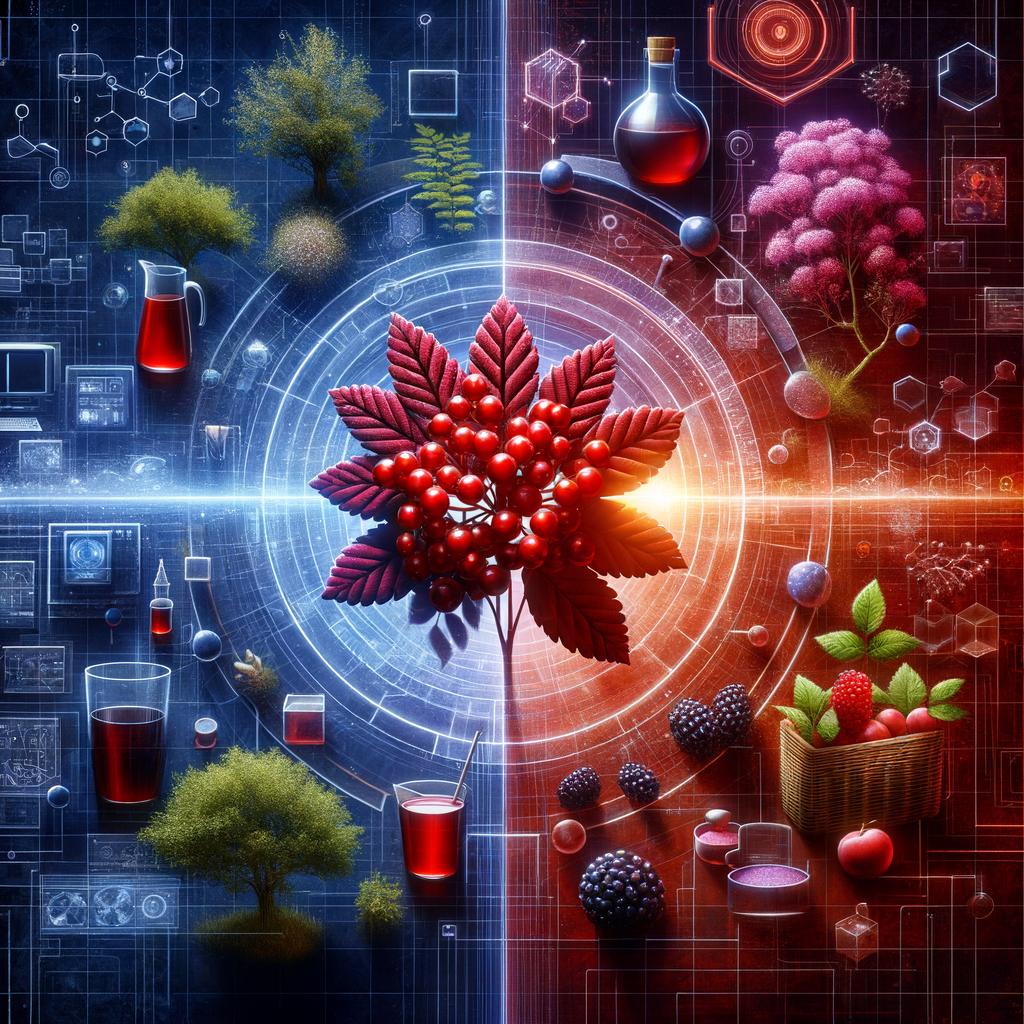
Introduction: Get to the Roots of Elderberry Syrup
You’ve probably found yourself musing lately, “What kind of elderberry is best for syrup?” Given the increasing popularity of this health-supporting staple, it’s an excellent question to ponder. The short and sweet answer: the Sambucus Nigra, commonly known as the European black elderberry, is traditionally considered the superior variety for syrup making. Why? Its time-honored reputation for packing the most beneficial punch lies in its optimal balance of flavor and nutritional components. But as with any simple answer, there’s a bit more to understanding the full story. This aromatic adventure into elderberries will take us from variety to harvest, touching on the syrup-making process and concluding with some practical tips for creating the best elderberry syrup.
The European Black Elderberry: The Star of Syrup
Foremost among assorted elderberries stands the European black elderberry, Sambucus Nigra. This dark, almost black fruit offers more than just a visually rich spectacle. The European black elderberry is renowned for its unique relationship with both taste-buds and health with its high concentrations of vitamins and antioxidants paired with an enjoyably tart flavor.
The American Elderberry
The American Elderberry (Sambucus Canadensis) holds its place in the elderberry lineup, with its fruitful clusters and lighter, sweeter taste. Primarily native to North America, it’s a close kin to the European black elderberry—just slightly less potent in its health properties.
Journey into the Harvest: Timing Matters
Not just the variety of elderberry, but also the timing of harvesting plays a monumental role in conjuring that perfect elderberry syrup. Once the berries transition from green to a deep, dark hue—somewhere between purple and black—it’s an indication they’ve matured and are ready for picking. Harvest too early, and you’ll miss the full nutritional benefits; too late, and the birds might beat you.
Mother Nature’s Cues
Mother Nature, in her wisdom, tends to leave subtle signs for the perfect harvesting timeline. In case of elderberries, when the drooping clusters are hanging low and the birds are eyeing off your elderberries with a keen interest, it might be high time to get your basket ready.
The Magical Process: Making Elderberry Syrup
Creating your health-boosting elixir involves gently simmering the ripe berries to extract the beneficial compounds. Some folks add a twist of lemon, a stream of honey, or even a dash of ginger to their concoctions to enhance the flavor and nutritional value.
Avoid the Green Trap
One tip every elderberry syrup enthusiast should bear in mind—avoid the green stems and unripe berries at all costs. They contain a form of cyanide, which is not something you want in your morning spoonful of wellness.
Conclusion: The Sweet Summary
To wrap it up, the best elderberry for your syrup endeavors is the European black elderberry, or Sambucus Nigra, harvested with care and transformed into a heart-warming syrup with a personal touch. Pair this with some natural sweeteners, add a generous sprinkling of patience, and experience the magic for yourself.
Frequently Asked Questions
1. Can I use American elderberries for syrup?
Absolutely! While they might not be as potent as their European counterparts, they still offer numerous beneficial properties.
2. Are there any elderberries I can’t use?
All elderberries are not created equal. Avoid red elderberries, as they’re not safe to eat raw and require particular preparation to consume.
3. How do I know when my elderberries are ripe?
Look for a rich, dark color (almost black), drooping clusters, and birds roaming around with interest.
4. Is making elderberry syrup hard?
Not at all! With the correct resources and a bit of patience, creating homemade elderberry syrup is quite a remarkable and rewarding experience.
5. Can I add other ingredients to my elderberry syrup?
Certainly! Ingredients like honey, ginger, or citrus not only enhance the flavor but can also add extra health benefits.


